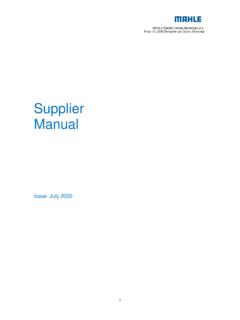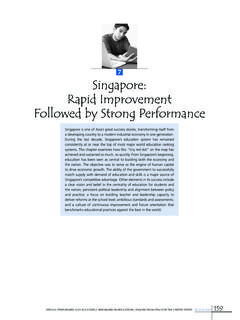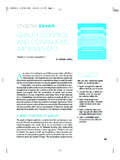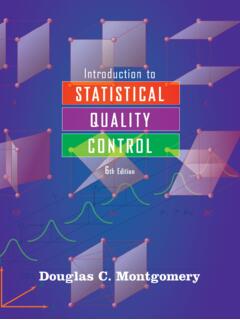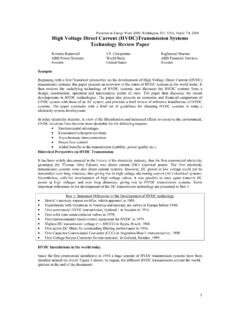Transcription of Fundamentals of land ownership, land boundaries and ... - …
1 Fundamentals of land ownership , land boundaries and surveying G J Donnelly 1 About this document This document was commissioned and first published in 2012 by the ANZLIC Committee on Surveying and Mapping (ICSM) to provide students and interested members of the public with an overview of key matters relating to the ownership of land and the boundaries that define the limitations of that ownership , including a review of the role of surveyors in the determination of land boundaries . As such, it does not purport to be a source of legal advice, nor is it intended to be a complete or absolute treatise of the subject. About the author Gus Donnelly qualified and registered as a land surveyor in Tasmania in 1966, subsequently gaining considerable professional experience in a wide variety of public and private sector roles.
2 In 1985, he completed a Graduate Diploma in Professional Management. He was appointed Chief Surveyor (Department of Main Roads, Tasmania) in 1986 and Manager Survey and Property (Department of Transport and Works, Tasmania) in 1991. From 1993, Gus moved into management roles in quality and continuous improvement , road maintenance and project management. He retired from full-time employment with the Tasmanian Government in 2000 and established himself as a respected facilitation and project management consultant. Throughout his impressive career, Gus played a major role in the surveying profession, including: President, Institution of Surveyors Australia (Tasmanian Division) 1987-88 Member, land Surveyors Board 1983 1991 Member, Board of Studies (University of Tasmania) 1985-1991 Member, Survey Industry Consultative Committee (University of Tasmania) 1985 1991 Federal Councillor, Institution of Surveyors, 1991 1994 Fellow, Institution of Surveyors, 1989 Facilitator, transfer of Surveyors Board responsibilities from the Tasmanian Government to the Institution of Surveyors Australia (Tasmanian Division), 2004 Facilitator, ICSM Cadastral Reform Workshop, 2008.
3 Other articles by the author include Highways in Tasmania , a paper dealing with legal aspects of the creation and ownership of highways in Tasmania, the rights and restrictions of land ownership and specific applications to highways and adjoining lands, published in The Australian Surveyor, December 1986 (vol. 33 No. 4). Acknowledgements The author acknowledges and thanks the following people for their invaluable assistance and contributions to the development of this paper: Dr Jon Osborn, School of Geography and Environmental Studies, University of Tasmania, for encouragement, support, guidance and review Surveyor-General Bill Hirst, ACT Planning & land Authority, for review and suggestions for improvement Former Surveyor-General Don Grant, land Information New Zealand, for information and data related to New Zealand Former Surveyor-General Peter Murphy and John VanderNiet of the Tasmanian Department of Primary Industries, Parks, Water & Environment, for information, historical records and relevant data.
4 G J Donnelly and ICSM 2014 2 Contents Introduction .. 3 Historical perspective .. 3 The relevance and importance of land ownership systems in a modern society .. 3 Concepts of land and land ownership .. 4 The meaning of land .. 4 The cadastre .. 4 Systems of ownership and 5 Freehold vs leasehold .. 7 Co- ownership of property .. 7 ownership rights and obligations .. 8 Relevance of property boundaries to ownership .. 8 land boundaries .. 9 Kinds of boundaries .. 9 Definition of boundaries of land parcels .. 9 The nature of boundaries .. 10 Home boundaries .. 10 Boundary disputes and judicial determination .. 11 Some interesting cases .. 11 Surveyors and Surveying .. 13 What Surveyors do .. 13 Evolution of surveying and surveying technology .. 13 Control of surveying standards and survey quality .. 14 Engaging the services of a registered or licensed surveyor.
5 15 Finding a registered surveyor .. 15 Becoming a registered surveyor .. 15 Professional surveying bodies .. 15 Dealing with complaints and disputes .. 15 References .. 16 Useful websites .. 16 ANZ universities offering accredited surveying courses .. 16 3 Introduction Historical perspective The Fundamentals of land ownership and land boundaries date back to the very roots of civilisation, and matters relating to possession and control ( ownership ) of land are well documented in historical records. Indeed, the territorial control of land has been a fundamental issue in the rise and fall of empires throughout history (for example, the Roman Empire) and the cause of a great number of the world s wars since the beginning of civilisation. In the centuries BC, the importance of land ownership was focused on arable lands used for productive agriculture, and even in those times there were issues associated with occupation and boundaries : in 173 BC Lucius Postumius Albinus, a statesman of the Roman Republic, was sent to Campania (a region in Southern Italy) to separate the land of the state from that of private persons, because private land owners had slowly expanded their boundaries into public lands (Lucius Postumius Albinus (Consul 173 BC) wiki 2011).
6 Biblical references to the land of Israel and its boundaries can be found in: Genesis 15; Exodus 23; Numbers 34; and Ezekiel 47 ( land of Israel wiki 2012). In fact, the boundaries of the Middle Eastern States have changed regularly throughout history. In more modern times, we continue to witness wars arising, in part, over control of territorial boundaries , for example: the Six Day War in the Middle East in 1967 between Israel and Jordan, Egypt and Syria; and the Bosnian War that took place between April 1992 and December 1995 as a result of the breakup of Yugoslavia. The relevance and importance of land ownership systems in a modern society In recent times, the importance of control of land (and a nation s offshore and seabed maritime boundaries ) is more likely to be centred on rights of economic development and control of important resources, such as oil and fishing rights.
7 In particular, our land tenure (manner of possession) system is fundamental to, and provides investor and community confidence in: development planning, economic growth and sustainability social stability through housing and employment financial security in economic development and property markets natural resource and environmental management and sustainability. land ownership systems also underpin: government policy making and program delivery taxation, land administration and the distribution of electoral boundaries land use management and regulation. 4 Concepts of land and land ownership The concept of land ownership as Australia and New Zealand understand and practise it is not universal and there are many other forms of ownership existing in different cultures throughout the world. Many are quite informal in the way they operate.
8 In fact, our system is very formal and highly structured in comparison with developing countries. The system used in Australia and New Zealand is a comparatively recent development in world history and is based on common law (that part of law developed over a long period of time by decisions of courts). Other countries that use common law include Canada, Ireland, the United Kingdom and the United States of America. Common law principles can be overruled by statute law , which is established by legislative enactments such as Acts or Regulations. land under common law is said to be held in fee simple , which describes a form of ownership that can be held by owners and their heirs indefinitely. The meaning of land land is often referred to as real property , which, in very basic terms, means property that is fixed and immovable as distinct from personal property which, again in basic terms, means property (as in goods and chattels) that is not fixed and can be moved.
9 The general principles of ownership at common law have long been established in the courts of equity, although the concept of extent of ownership has changed significantly in interpretation from the nineteenth to the twenty-first century. In addition, statutory law continues to place increasing restrictions on the rights and benefits that would otherwise accrue with land ownership (Donnelly 1985). At common law, the term land when used in relation to a particular parcel meant the surface of the Earth, the soil beneath the surface to the centre of the Earth and the column of air above the surface. It included all things growing on or affixed to the soil, such as trees, crops and buildings. It also included all the minerals in the soil excepting gold and silver, which at law belonged to the Crown as royal metals (Hallmann 1994, ).
10 This concept in the twenty-first century is, however, subject to limitation by statutory law and comes increasingly under challenge at common law. As examples, ownership of the air space above the land surface is qualified by Air Navigation legislation, and unregistered wayleaves and easements under Electricity Easements legislation. Apart from these and other similar statutory exceptions, the surface owner does own the airspace above their land in the sense that, subject to building regulations, they are fully entitled to extend their occupation of the air, for example, by building high-rise developments. However, judgements in recent cases are interpreted to mean that an owner's rights extend only as far as is necessary for the ordinary use and enjoyment of their land .

